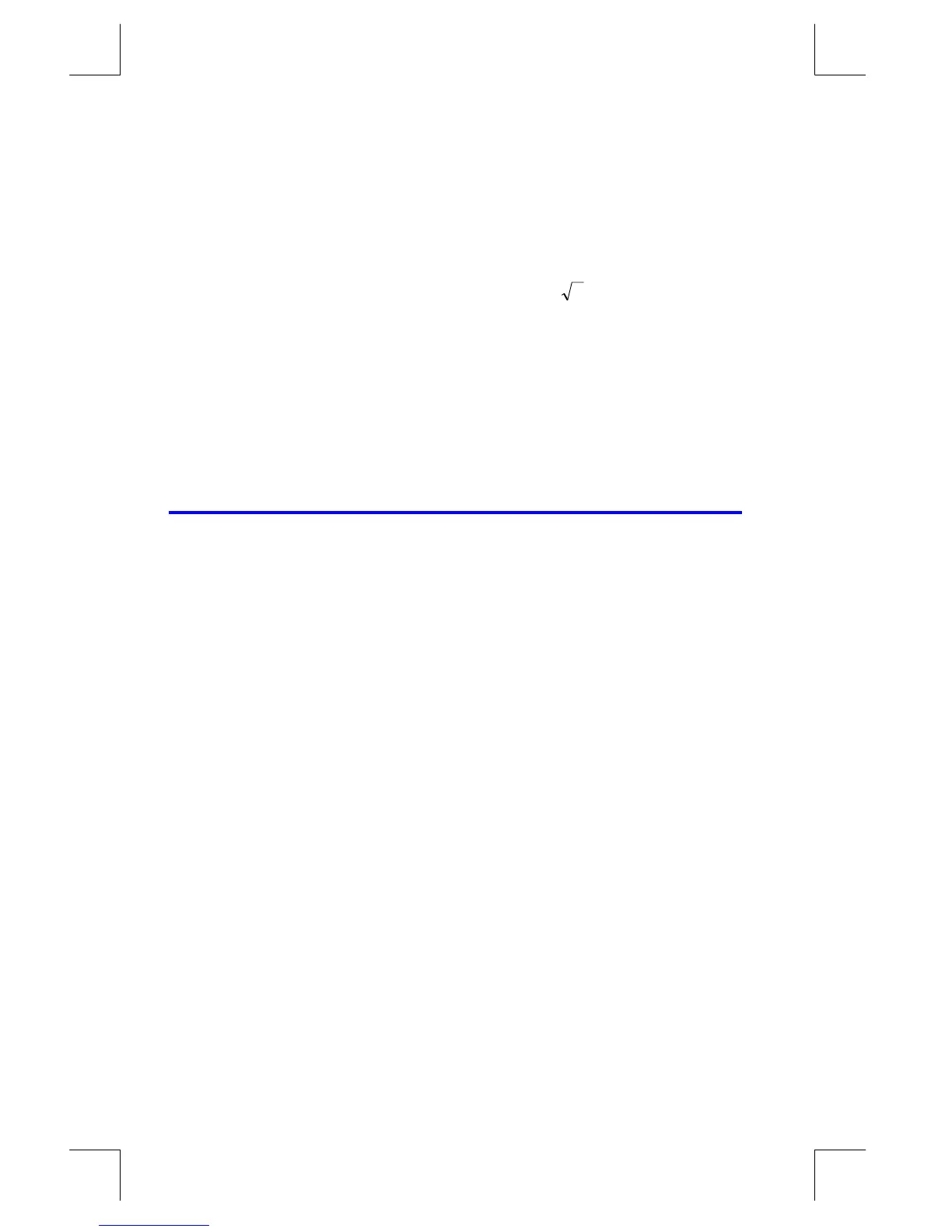D–8 More about Solving
File name 33s-E-Manual-1008-Publication(1st).doc Page : 386
Printed Date : 2003/10/8 Size : 13.7 x 21.2 cm
2.7
_
the root.
º
d
Selects Equation mode;
displays the equation.
Û
X
Calculates the root usin
guesses that bracket
6
.
<
<
f(x) is relatively large.
There is a pole between the final estimates. The initial guesses yielded opposite
signs for f(x), and the interval between successive estimates was narrowed until
two neighbors were found. Unfortunately, these neighbors made f(x) approach a
pole instead of the x–axis. The function does have roots at –2 and 3, which can be
found by entering better guesses.
When SOLVE Cannot Find a Root
Sometimes SOLVE fails to find a root. The following conditions cause the message
:
The search terminates near a local minimum or maximum (see figure a,
below). If the ending value of f(x) (stored in the Z–register) is relatively close
to zero, it is possible that a root has been found; the number stored in the
unknown variable might be a 12–digit number very close to a theoretical
root.
The search halts because SOLVE is working on a horizontal asymptote—an
area where f(x) is essentially constant for a wide range of x (see figure b,
below). The ending value of f(x) is the value of the potential asymptote.
The search is concentrated in a local "flat" region of the function (see figure c,
below). The ending value of f(x) is the value of the function in this region.

